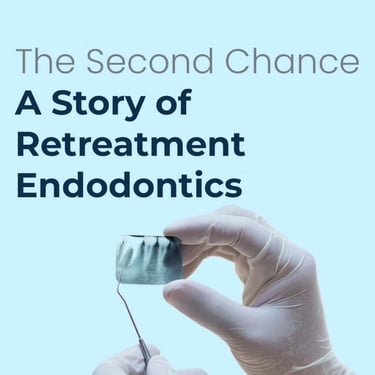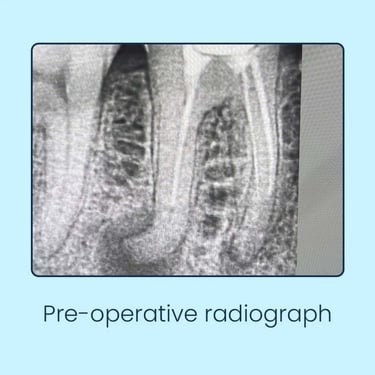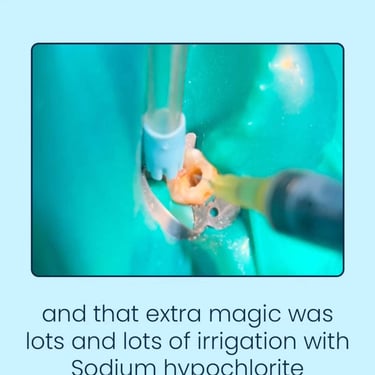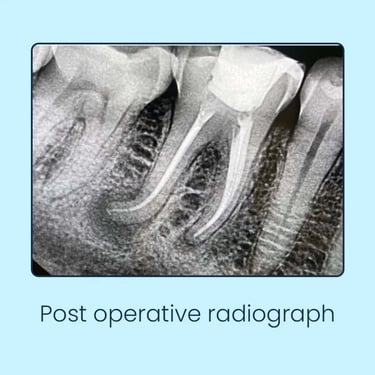Case Study: A Story Of Retreatment Endodontics
The Second Chance" – A Story of Retreatment Endodontics
Patient reported to the clinic for a crown wrt 46.
Upon examination, the tooth was asymptomatic with no swelling or tenderness on percussion. On taking a radiograph saw a very evident peri-apical radiolucency wrt both mesial and distal canals. The canals were underfilled and a leaky post endo-restoration
Root canal procedure was done 7 years ago.
Now, I had to make a decision whether to go for re-treatment or simply give what the patient demands.
This is where endodontics becomes an art of judgment as much as science. I mentally ran through my checklist:
When to Retreat:
Persistent or emerging symptoms: Patient had no pain— could be a healing lesion (I need old radiographs to conclude that) or the infection is low grade waiting to burst.
Radiographic evidence: That periapical radiolucency was no ghost.
Coronal seal status: The old restoration had marginal leakage—possibly the root of failure.
Original treatment quality: The obturation didn’t reach the apex— the distal root had an apical curvature, possible that apical third wasn’t even negotiated.
But there were other factors too—factors that often go unsaid in textbooks.
Was the tooth restorable after access and gutta-percha removal?
Would non-surgical retreatment offer better prognosis than apical surgery?
Was the patient motivated for multiple appointments?
And, more importantly: was the tooth worth saving?
I explained all the options and why I would like to do a re-treatment before proceeding for a crown. Patient made a decision and we proceeded with the re-treatment.
When Not to Retreat:
I remembered a case from a few months ago—severe vertical root fracture, a tooth unrestorable after crown removal. In that case, retreatment would’ve been heroic dentistry—with no hero’s ending.
Or the young patient with untreated diabetes and poor compliance—no point in re-entering canals if systemic healing wouldn’t follow.
Sometimes, the best retreatment is acceptance—and moving forward.
Another chance, another story—and this time, hopefully, with a better ending.








